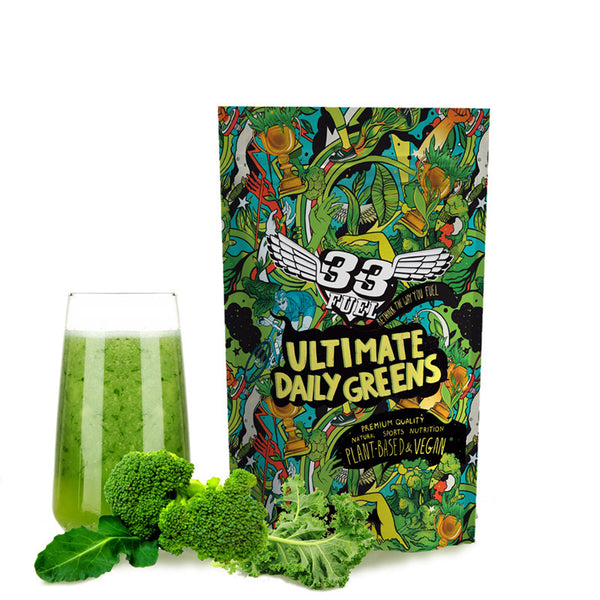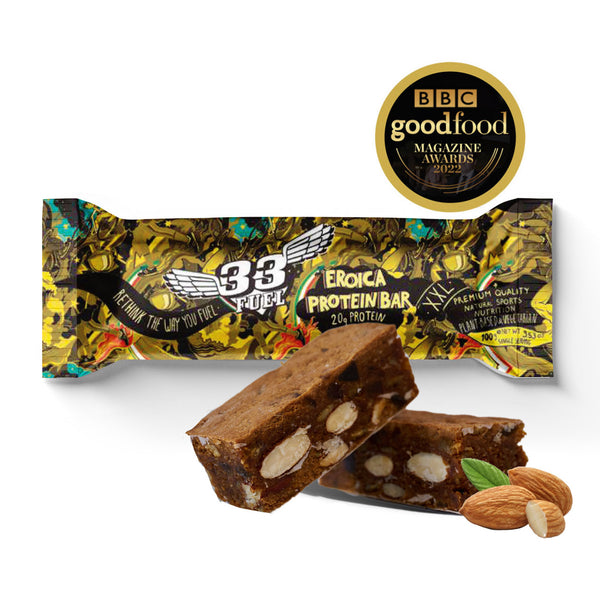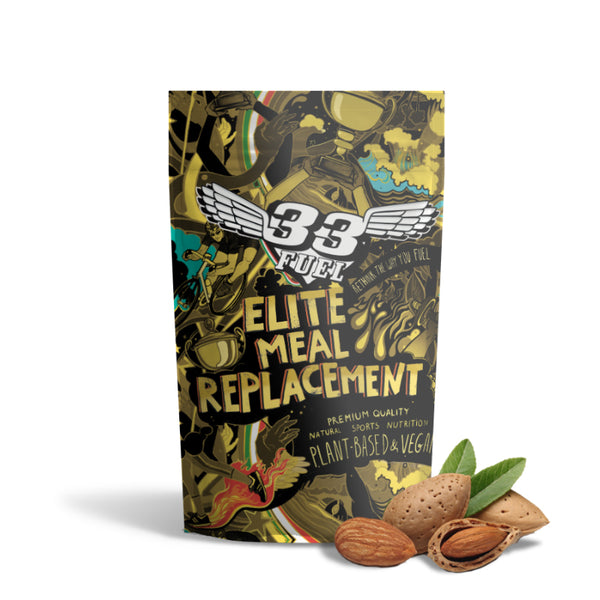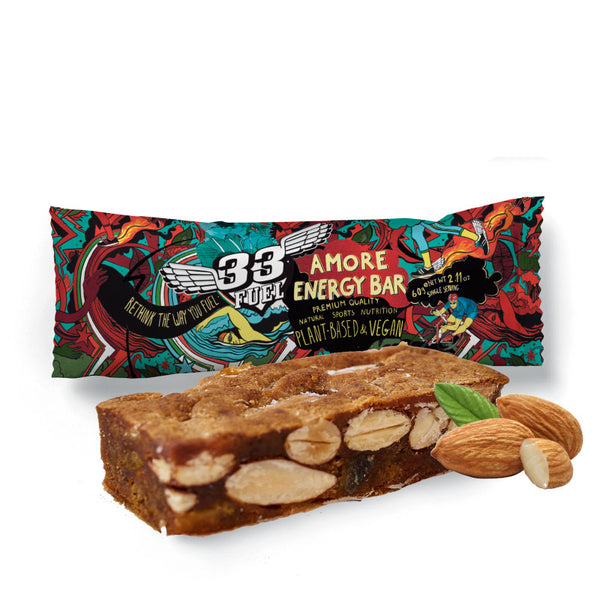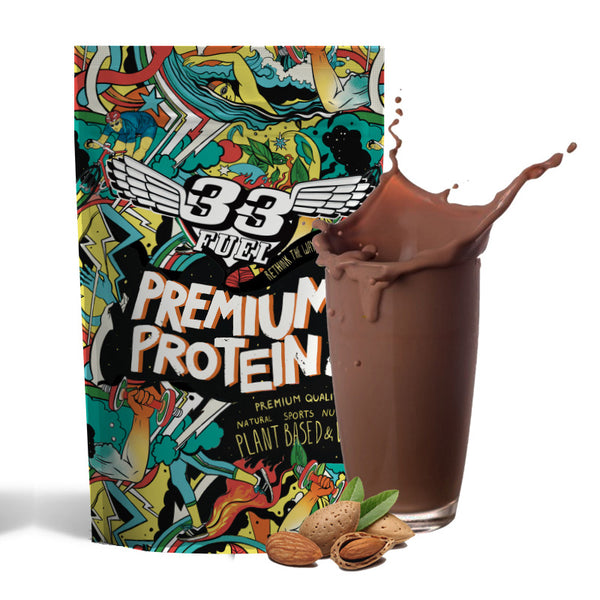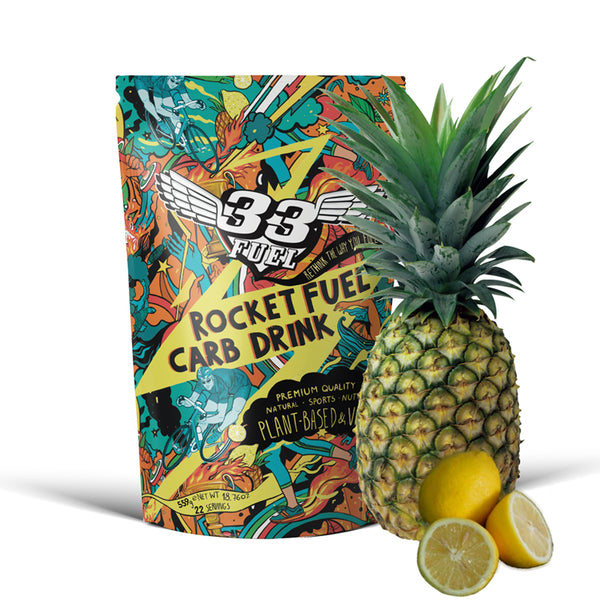Nutrient Density & Sports Performance

We talk a lot about nutrient density at 33Fuel HQ because it’s at the heart of our mission - to deliver powerful, natural fuel that delivers upgraded performance. Nutrient dense foods are essential for this and are crucial for achieving race weight, nailing recovery and optimising performance. If you’re not fueling nutrient dense, you’re leaving big gains on the table
What is nutrient density?
Let’s break it down.
Density is 'a measurement that compares the amount of matter [nutrients] an object has in relation to its volume (calories)'.
Shop our nutrient-dense sports nutrition
Best Sellers
Nutrients are the essential building blocks of life. They provide us with energy, repair tissue, boost our immune system and support body function. Carbs, fats and proteins are nutrients, but this term often refers to vitamins, minerals, complex carbs, lean protein and essential fatty acids – every food we’ve ever been told is good for us!
Thus, nutrient density refers to the amount of nutrients you consume given the number of calories that food contains. Nutrient dense foods provide a lot of goodness for fewer calories, compared to nutrient-poor foods which contain more calories.
When you start looking into it, you’ll notice the chasm. For example, a slice of white bread may contain the same number of calories as a slice of whole wheat bread, but the whole wheat slice also contains:
- 4x more potassium
- 4x more magnesium
- 3x more zinc
- 2x more fibre
- 2x more protein
But it’s not just about nutrients. As we said, this is about density, which means we must look at calories too, for they form the other half of this equation. After all, there’s not point hitting your nutrient targets if you’re also consuming excess calories.

It’s about quality over quantity
Nutrient density and sports performance - is a calorie really just a calorie?
Yes and no.
It’s true that one calorie will deliver the same amount of energy, regardless of the source.
But all calories are not created equal.
The human body is a highly complex organism and 100 calories of chocolate is not going to be processed, digested and utilised in the same way as 100 calories of broccoli.
There’s a myriad of ways to illustrate the effect different calories have on our bodies, but that’s for another blog. In the meantime, ponder these points:
- The thermic effect. Protein is harder to digest than carbs and fat. So even though protein contains 4 calories per gram, your body will not absorb all those calories - some will be burnt during digestion. Thus, 4 calories of protein are not equal to 4 calories of carbs
- Different sugars affect hormones differently. Fructose increases ghrelin levels - the hunger hormone – more than glucose. So, the effect of 100 calories of fructose is different to 100 calories of glucose
- Satiety varies enormously. Be honest, have you ever consumed a Big Mac meal, putting away up to 1,300 calories but felt hungry just an hour later? Try eating 1,300 calories of beans and see if you’re still hungry!
- The Glycemic Index (GI). This measures how quickly foods raise bloody sugar levels. Refined carbs are absorbed quickly and sit at the top of the index, whereas Low GI foods stabilise blood sugar levels. 100 High GI calories will not have the same effect as 100 Low GI calories
Nutrient density for sports performance
You don’t need us to tell you that anyone who wants to stress and recover on a frequent basis (eg, athletes) need vitamins and minerals for optimal performance.
Athletes striving for their best – whatever that looks like to you – must ensure nutrient density forms a cornerstone of their sports nutrition.
Unfortunately, ordinary sports nutrition has got stuck in the 80’s and so much of what we consume under the belief it’s “good for sports performance” is exactly the opposite.
Take maltodextrin, for example. It’s the most common ingredient in ordinary sports nutrition and yet Bell Chem, one of the leading maltodextrin manufacturers states:
“maltodextrin contains almost no vitamins and minerals to assist with turning carbohydrates into energy. Therefore, consuming maltodextrin may actually reduce the amount of vitamins and minerals in the body because it uses more vitamins and minerals than it brings into the body. Over time this can lead to a net decrease in a person’s vitamin and mineral levels”
That’s coming from a leading maltodextrin manufacturer! Essentially, maltodextrin is the perfect example of what nutrient density is not.

You’ll never achieve your best without nutritious food
Sports nutrition needs to provide energy, assist tissue growth and regulate metabolism.
Food such as wholegrain bread and cereals, rice, beans, fruits and vegetables are nutrient dense and provide a wealth of vitamins and minerals as well as carbs, fats and protein. And because they contain significantly fewer calories than sugary counterparts, they support lean muscle growth and weight loss.
Nutrient dense foods for performance
A study by the Centre for Disease Control and Prevention explains “powerhouse fruits and vegetables are foods most strongly related with reduced chronic disease risk”. Examples of nutrient-dense foods include:
- Cruciferous vegetables – watercress, cabbage, kale, arugula
- Greens – spinach, broccoli, chard, beet green, chicory, spirulina (basically everything in our Ultimate Daily Greens!)
- Whole grain products – rice, wholegrain pasta, oats
- Legumes – beans, chickpea, kidney beans, black beans, lentils
- Nuts and seeds – flaxseed, hemp, walnuts, almonds, sesame (all present alongside 27 more athletic superfoods in our Elite Pre and Post Workout Shakes)
- Protein – beans, nuts, seeds, salmon, sardines
- Fruits – blackberries, lemon, orange, lime, grapefruit, strawberry
- Yellow/orange veggies – sweet potatoes, squash, carrots, tomatoes
Add a spoon of our Ultimate Daily Greens to your morning smoothie or a glass of water to power up the nutrient density of your breakfast.

Nutrient-poor foods
- Ultra-processed food – this includes ‘gourmet’ ready meals as much as it does those late-night kebabs!
- Baked goods – you know the deal here, but this also includes that artisan almond danish and £5 vegan donut
- Drinks – sports drinks, soft drinks and alcohol too.
You get the idea.
How to improve nutrient density for sports performance
It’s quite easy and common sense.
No foods are denser in nutrients than whole, organically-grown food. Fact.
If you’re unsure your sports nutrition is delivering nutrient density alongside the calories, check the ingredients label.
If there are lots of simple carbs, sugars, anything called 'flavouring', and any chemical sounding or unpronounceable ingredients, then it’s nutrient poor and ultra-processed.
Is nutrient density in sports nutrition everything?
As a final note, it’s worth pointing out that nutrient density cannot be the sole consideration in your food choices - there are a few that buck the trend.
Because nutrient density focuses on the ratio of nutrients to calories, foods particularly dense in calories have a hard time as their higher calorie value offsets the ratio. The avocado is the perfect example.
The humble avo' packs a huge nutrient punch but, because it’s also dense in good fats and calories, its density doesn’t appear to be all that great, despite it being a super-healthy addition to any meal.
More performance boosting content
From the Vlog
From the Podcast
From the Blog
12 signs of overtraining syndrome
How to burn fat during exercise
10 utterly-delicious vegan recipes
